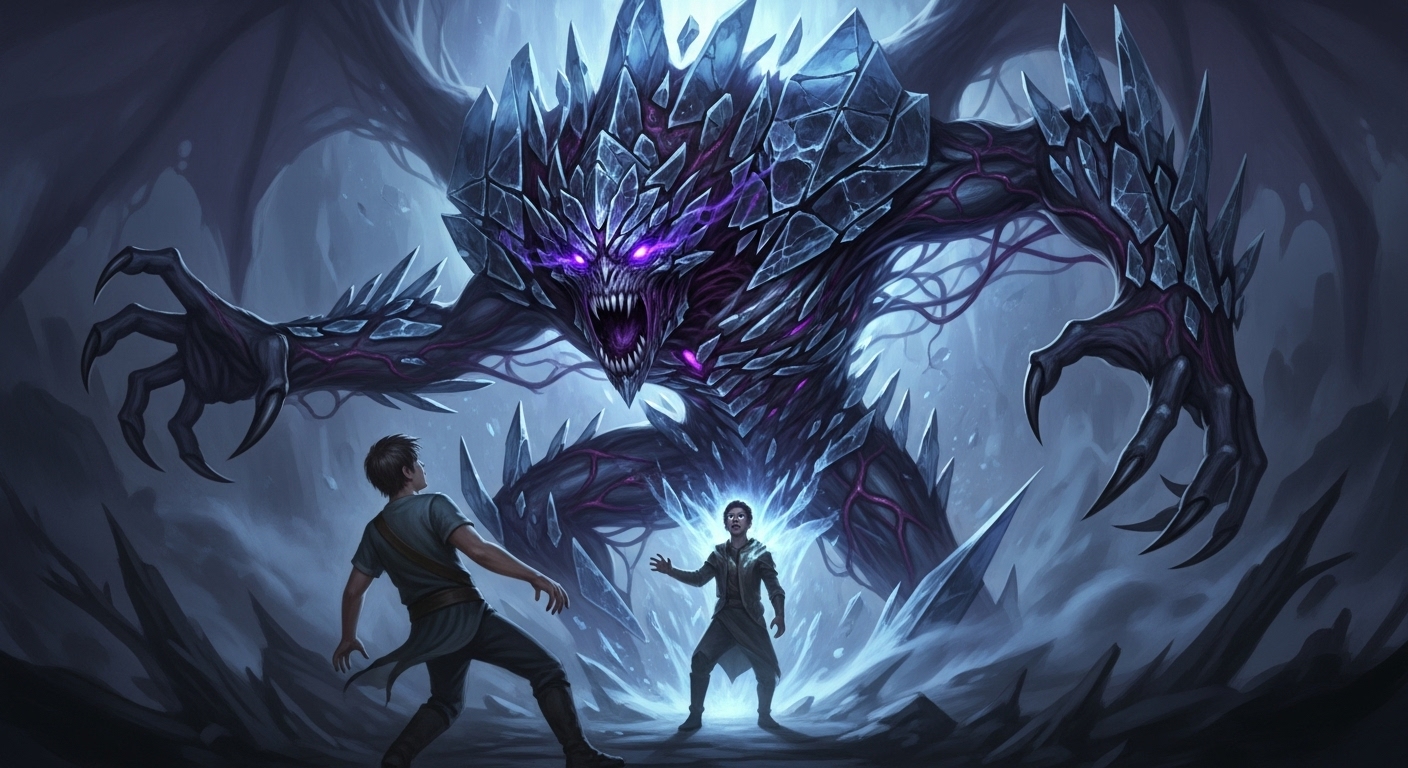Phantasmal Killer

- Level: 4
- School: Illusion
- Class: Bard, Wizard
- Casting Time: Action
- Range: 120 feet
- Components: V, S
- Duration: Concentration, up to 1 minute
You tap into the nightmares of a creature you can see within range and create an illusion of its deepest fears, visible only to that creature. The target makes a Wisdom saving throw. On a failed save, the target takes 4d10 Psychic damage and has Disadvantage on ability checks and attack rolls for the duration. On a successful save, the target takes half as much damage, and the spell ends.
For the duration, the target makes a Wisdom saving throw at the end of each of its turns. On a failed save, it takes the Psychic damage again. On a successful save, the spell ends.
Using a Higher-Level Spell Slot. The damage increases by 1d10 for each spell slot level above 4.
Tactical Usage
Phantasmal Killer serves as a potent single-target damage and debuff combination that can eliminate or severely impair high-value enemies through sustained psychological assault. The initial damage of 4d10 psychic plus continued damage each turn creates significant threat to single targets.
Disadvantage on ability checks and attack rolls provides substantial tactical benefit by reducing enemy combat effectiveness even when targets survive the damage component. Elite enemies and spellcasters become significantly less dangerous under this debuff.
Concentration duration requires positioning and protection but rewards successful maintenance with potentially massive total damage output. Repeat saving throws provide escape opportunities while maintaining threat pressure.
Spell Combinations
Phantasmal Killer benefits from spell combinations that protect caster concentration and prevent target escape. Counterspell and Shield help maintain focus while Wall of Force or other barriers trap targets within effect range.
Disadvantage exploitation through party coordination maximizes the debuff component - allies can focus attacks on affected targets knowing they'll have reduced defensive capabilities and counterattack potential.
Damage amplification strategies include vulnerability creation through other spells or abilities that increase psychic damage effectiveness, though few options specifically enhance mental damage types.
Material Component Details
Phantasmal Killer requires no material components, making it accessible and cost-effective for repeated use during extended encounters or campaigns. Somatic and verbal components require typical spellcasting conditions.
Component absence eliminates resource concerns and availability issues that might limit other high-damage spells. Economic efficiency makes this spell attractive for damage-focused builds and extended adventuring.
Simplicity of casting requirements allows focus on tactical positioning and target selection rather than component management, resource conservation, or preparation logistics.
Creator Notes
Phantasmal Killer provides excellent single-target damage potential while maintaining reasonable counterplay through saving throws and spell resistance. Scaling potential makes it relevant throughout campaign progression.
Debuff mechanics create interesting tactical decisions about target prioritization and party coordination. Disadvantage effects can dramatically shift encounter balance when applied to key enemies.
Narrative opportunities arise from fear-based effects that reveal character psychology and create memorable moments of psychological horror within combat scenarios.
Environmental Interactions
Phantasmal Killer creates purely mental illusions that don't interact physically with environment but can represent environmental fears like falling, drowning, or environmental hazards that resonate with target psychology.
Range limitations require line of sight and reasonable positioning, though 120-foot range provides substantial flexibility for caster positioning and target selection in most encounter environments.
Mental effects function regardless of lighting, terrain, or physical barriers between caster and target once established, though initial targeting requires standard visibility.
Common Rulings & Clarifications
Saving throw timing occurs initially and then at the end of each of the target's turns, providing regular escape opportunities while maintaining sustained threat potential.
Damage application deals 4d10 initially on failed save (half on success), then same amount on subsequent failed saves. Successful saves end the spell rather than reducing damage.
Disadvantage duration persists throughout the spell's effect, applying to all ability checks and attack rolls made by the affected target during combat and other activities.
Scaling effects increase damage by 1d10 per spell level above 4th, making higher-level slots significantly more dangerous for sustained encounters.
Alternative Applications
Interrogation scenarios benefit from psychological pressure without permanent harm, as targets experience genuine terror that might encourage cooperation and information sharing.
Crowd control applications target enemy leaders or spellcasters whose reduced effectiveness impacts entire enemy groups. Debuff effects multiply when applied to coordinating figures.
Assassination attempts gain plausible deniability through psychological rather than physical harm, though damage totals can certainly prove lethal to appropriate targets.
Related Spells
Fear magic like Fear and Cause Fear provide alternative approaches to psychological manipulation with different mechanics and area effects rather than single-target focus.
Damage alternatives include mental spells like Mind Spike and Synaptic Static that deal psychic damage through different mechanisms and target configurations.
Debuff comparison with Hold Person, Slow, and other disabling effects shows different approaches to reducing enemy combat effectiveness through varied mechanical applications.
Scaling Analysis
Phantasmal Killer scales excellently with higher-level spell slots, gaining 1d10 damage per level that significantly increases both initial and sustained damage potential. 6th-level slots deal 6d10 damage per failure.
Campaign utility remains strong throughout progression as single-target damage scales appropriately and debuff effects remain relevant against high-level enemies with powerful abilities.
Resource efficiency improves with level as spell slot value increases while component costs remain absent. Higher-level applications provide excellent damage-per-resource ratios.
Narrative Flavor
Phantasmal Killer manifestation should emphasize the deeply personal nature of fear-based illusions that tap into target psychology and individual terror. Fears should reflect character background, experiences, and psychological vulnerabilities.
Visual descriptions might include manifestations of death, failure, loss, or other primal fears that resonate with target personality and history. Illusions appear completely real to affected individuals.
Different manifestations could reflect cultural fears, personal trauma, professional hazards, or species-specific terrors that create memorable and thematically appropriate psychological horror within fantasy combat encounters.